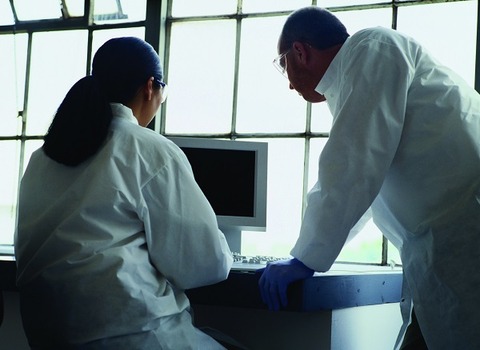Process involves ‘fancy balloons’ that change shape when inflated with air
Princeton, New Jersey – Researchers at Princeton University have developed “bubble casting”, as a new way to make soft robots using balloons that change shape in predictable ways when inflated.
Bubble casting, said a Princeton press release 11 Nov, uses 'basic rules of fluid mechanics' to offers "a simple, flexible way to create actuators for soft robots."
The method involves injecting a liquid elastomer into a mould which could be as simple as a drinking straw or a more complex shape, like a spiral or flipper.
The researchers then injected air into the liquid elastomer to create a long bubble throughout the length of the mould.
Helped by gravity, the bubble slowly rises to the top as the elastomer drains to the bottom.
Once the elastomer hardens, it can be removed from the mould and inflated with air, which causes the thin side with the bubble to stretch and curl in on the thicker base.
"If it's allowed more time to drain before curing, the film at the top will be thinner,” explained first author Trevor Jones, a graduate student in chemical and biological engineering.
And the thinner the film, the more it will stretch when inflated, enabling greater overall bending.
By controlling factors such as the thickness of the elastomer coating the mould, how quickly the elastomer settles and cure-time, the researchers claim they can dictate how the resulting actuator will behave.
So far, the researchers have cast star-shaped "hands" that gently grip a blackberry, a coil that contracts like a muscle and a set of "fingers" that curl up one by one as the entire system is inflated.
The actuators deform when inflated with air, compared to other soft robotics systems which employ magnetic fields, electric fields, or changes in temperature or humidity.
A large part of the work, according to co-author Etienne Jambon-Puillet, was figuring out how the robots would behave once inflated so that the researchers could design soft actuators with specific movements.
"We can predict what will happen using a simple equation… We understand quite well now what happens when we inflate these tube-like materials," explained Jambon-Puillet who helped develop a computer simulation of the system.
According to Princeton, a major advantage of bubble casting is that it does not require 3D printers, laser cutters or other expensive tools typically used in soft robotics.
The system is also claimed to be scalable, with the potential to yield actuators several meters long with features as thin as 100 microns.
"What's really smart is this idea to shape the structure just by natural fluid motion," said François Gallaire, a professor of fluid dynamics at the EPFL in Lausanne, Switzerland, who was not involved in the research.
The processes, said Gallaire, can work at many different scales, including for very small things.
“That's exciting because casting these tubes with typical fabrication methods could be really difficult, so there's the potential to make very small tubes," he added.
Despite its flexibility, bubble casting does have its limits.
So far, researchers have succeeded in forcing a bubble through only a few meters of elastomer-filled tubing. Also, over-inflation can cause the balloons to pop.
In their next step, the research team will use the system to create more complex actuators and explore new applications.
These will include designing actuators that move together in sequential waves or creating actuators with chambers that alternately contract and relax using a single pressure source to inflate them to mimic the movement so of the heart.



